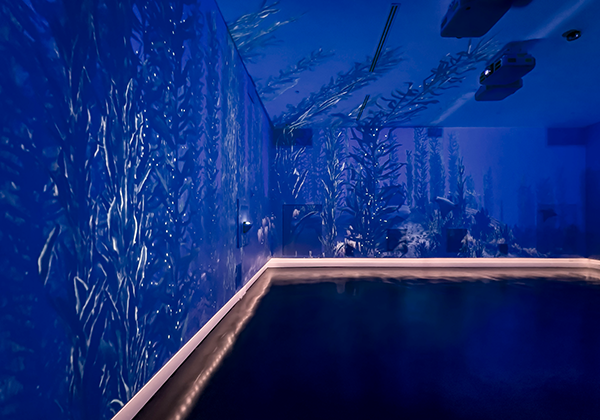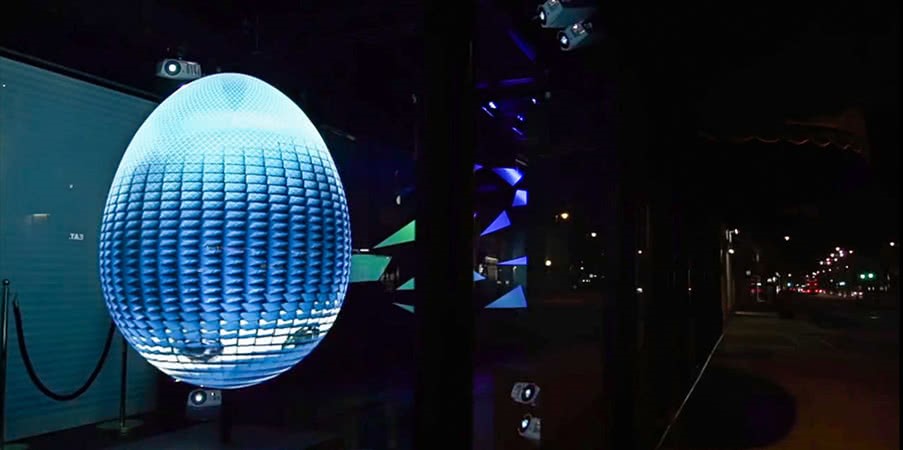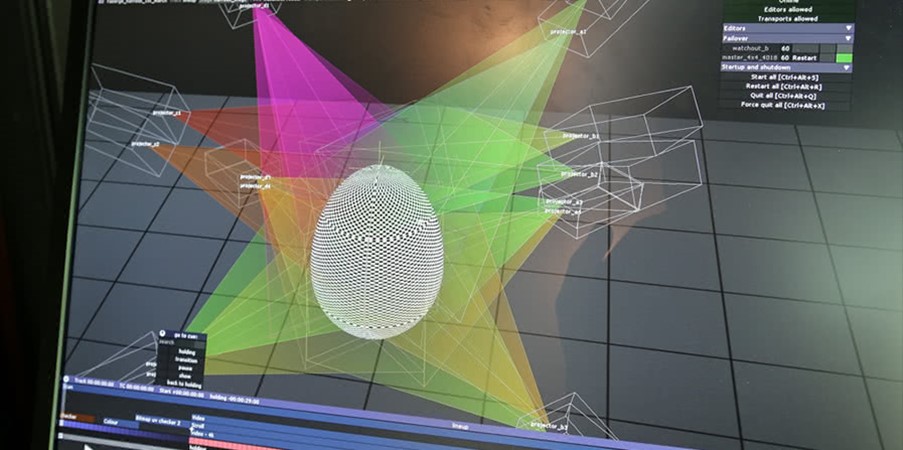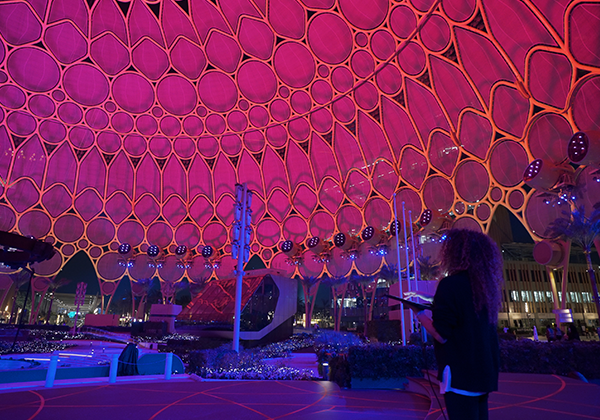
case study 2015 4 min read
Fabergé at Harrods London

disguise lights up the interactive Fabergé window display at famed London retailer Harrods for Easter.
Famed London department store Harrods and heritage Russian art jeweller Faberge celebrated Easter with a 21st century twist on Faberge’s iconic Easter eggs: a giant interactive projection-mapped egg on display in the store’s holiday windows. Pixel Artworks formerly known as Projection Artworks used a disguise 4×4pro media server to map the egg with stunning video imagery.
Faberge has been synonymous with lavish Easter eggs since it made the first gemstone-encrusted eggs for the Russian imperial family in 1885. At Harrods Faberge offered shoppers an “egg bar” showcasing its jewelled egg pendants and charms and staged an egg hunt throughout the store.
International window designer Stuart Henry and his team at creative agency JUSTSO visualised an interactive projection on a 1.5-meter three-dimensional egg-shaped model for one of the Easter windows. Henry commissioned Projection Artworks to produce the egg’s digital content and projection element.
The company was challenged to create a dazzling interactive projection visible during daylight hours to shoppers and pedestrians passing by. Pixel Artworks used 16 Optoma projectors to cover the egg with an unprecedented 14,500 lumens/square meter – about 200 times brighter than a typical outdoor building projection. Shoppers could choose an egg pattern on an Apple iPad inside the store and watch as it was projected onto the rotating egg in the window.
Pixel Artworks has used disguise media servers on a number of projects; the company purchased its own disguise system last year to further its regular use and “help push the boundaries of projection mapping,” says Chris Philpott, Head of Production at Pixel Artworks.
For Harrods’ Faberge egg, the 4×4pro was “the only option that allowed us to run 16 heads from one machine, output the required texture, do the automatic projector lineup and blending, and provide realtime composition to create the show,” he explains.
The disguise system was also used extensively to plan the installation and projector locations and to sell the creative concepts to the client. “By enabling Footprints, the new disguise feature for truly simulating blends, shadowing and coverage, we could calculate required lenses and projector positions,” says David Bajt, who worked with Pixel Artworks on this project.
“Without disguise, it would not have been possible to set up the full installation before going on site,” says Philpott. “The pre-production and visualisation system allowed us to build the show remotely with the confidence of knowing how the final content would look.”
Bajt says, “It’s very interesting that only one disguise 4×4pro was needed to output to 16 projectors. In advance of the disguise forthcoming VFC card technology, this was done using four Datapath x4s with 2560×1600 inputs running at 60hz. Each projector therefore received a 1280×800 resolution, which essentially made each pixel on the physical egg 1-2mm big. The sharpness and brightness was stunning! The egg was bright and sharp from morning to night.”
Bajt also cites the media server’s ability to integrate with other technologies. “For this installation, disguise received OSC input from an iPad – the user selected what graphics to play from an iPad interface. It sent UDP commands to a Dataton WATCHOUT server that mapped up the adjacent shards hanging in the windows next to the egg, it sent DMXcommands to a Pharos control that triggered lighting cues, and it also played back uncompressed audio.”
Pixel Artworks found the disguise 4×4pro’s QuickCal and Dynamic Blending features to be especially helpful. “We had the egg 3D-scanned with 260 individual marker points. The model had no edges or vertices, so without disguise it would have been impossible to line up all the projectors manually in the three-day install period,” Philpott reports. “QuickCal, along with the sub mm 3D-scan accuracy, allowed us to map the egg in one night.”
Philpott adds that, “one click of a button set all the blending on 16 projectors as well – another very difficult task to do manually.”
From the outset disguise provided support on the capabilities of the system and offered early access to a number of features in development, such as projector control and Dynamic Blending, says Philpott. “The system was easy to use and performed flawlessly for the four weeks of the installation,” she notes. “Both Pixel Artworks and disguise learned a lot from the project. We are already looking at 32+ projector installations for future projects to continue pushing the boundaries.”
At Pixel Artworks Tom Burch, the company’s managing director, was the project lead; Scott Millar the lead developer; and Gavin McArthur the lead creative.
Equipment
- 4x4pro
- Find out more
Credits
- Client
Projection Artworks
- Content Producer
Projection Artworks
- Show Producer
JUSTSO
- disguise server provider
Projection Artworks
- disguise Programmer
Scott Miller
- System Integrator
Projection Artworks






